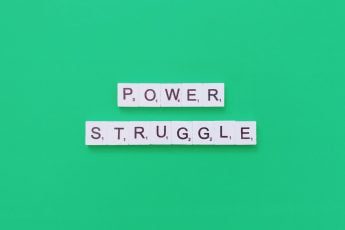Blockchain Business Models And Services

Blockchain technology is a decentralized, distributed digital ledger that records transactions across a network of computers. It is the technology that underpins cryptocurrencies, such as Bitcoin, which first emerged in 2009 as a decentralized digital currency. Blockchain technology allows for secure and transparent transactions without the need for intermediaries, such as banks.Explanation of the potential impact on business models and services. They have the potential to disrupt traditional business models and create new opportunities. By removing intermediaries, they enable peer-to-peer transactions and open up new possibilities for digital marketplaces, decentralized finance, and secure digital identities. They also enable new ways of verifying authenticity and ownership, making it possible for businesses to create new business models and services.
Decentralized Finance (DeFi)
Decentralized Finance, commonly known as DeFi, is a rapidly growing area of the blockchain and cryptocurrency space. It refers to the use of blockchain technology and smart contracts to create decentralized financial services, such as lending, borrowing, and insurance. The key advantage of DeFi is that it allows for these services to be provided in a decentralized and trustless manner, without the need for traditional intermediaries like banks or insurance companies.
One of the key drivers of DeFi is the ability to create and trade financial instruments on the blockchain, known as tokens. These tokens can represent a wide range of assets, including traditional financial instruments like stocks and bonds, as well as new types of assets like digital art or gaming items. By tokenizing these assets, DeFi allows for the creation of new financial products and services, as well as increased liquidity and accessibility for investors.
Examples of DeFi platforms and use cases
DeFi replacing classical financial services
Compound is a decentralized lending and borrowing platform that allows users to earn interest on their cryptocurrency holdings and borrow against them. The platform’s USP is that it allows users to earn interest on their assets while they are being used as collateral for loans, and also allows users to trade their positions with other users.
Lending platforms like SALT Lending and NEXO allow individuals to borrow and lend money using blockchain technology. These platforms use digital assets, such as tokens, to represent loans and collateral, making it possible for individuals to access financial services without the need for traditional banks or financial intermediaries.
Another example of a decentralized DeFi protocol is Aave, a lending platform that allows users to borrow and lend a variety of cryptocurrencies. Aave’s unique selling point (USP) is its flash loans feature, which allows users to borrow funds without any collateral for a very short period of time. Aave also offers “aTokens,” which are tokens that represent a debt position on the platform.
DeFi also has the potential to revolutionize traditional financial services such as insurance. Platforms like Nexus Mutual allows users to take out decentralized insurance policies on smart contracts and other blockchain-based assets. By leveraging the transparency and immutability of the blockchain, Nexus Mutual aims to create a more efficient and fair insurance market, where users can take out policies directly with one another, rather than through traditional intermediaries.
Specific DeFi services
An example for a DeFi platform organized as a Decentralized Autonomous Organization (DAO) is MakerDAO. It offers a decentralized stablecoin platform that allows users to borrow the stablecoin DAI, which is pegged to the value of the U.S. dollar. MakerDAO’s USP is that it allows users to borrow DAI without having to go through traditional credit checks. Additionally, MakerDAO’s collateralized debt positions (CDPs) allow users to borrow DAI by depositing cryptocurrency as collateral.
Uniswap is a decentralized exchange built on the Ethereum blockchain. Uniswap allows users to trade Ethereum and ERC-20 tokens directly with each other, without the need for a centralized intermediary. It uses a unique liquidity provision mechanism, in which users can add liquidity to the exchange in the form of a token pair, and earn a proportionate share of the trading fees. This creates a decentralized and autonomous market for trading cryptocurrencies.
As the DeFi ecosystem continues to grow and mature, it is likely that we will see even more innovative and disruptive applications of this technology in the future.
Digital Identity
Blockchain technology is a digital ledger system that allows for the secure and transparent storage of data. One of the key features of blockchain is that it is decentralized, meaning that it is not controlled by any single entity. This decentralization makes it an ideal platform for creating secure digital identities.
A digital identity is an online representation of an individual or organization. It is used for authentication and authorization in various digital platforms and services, such as online banking, social media, and e-commerce. Traditional digital identities are often controlled by centralized authorities, such as governments or corporations, which can make them vulnerable to data breaches, fraud, and misuse.
Blockchain-based digital identities, on the other hand, are decentralized and controlled by the individual or organization themselves. This means that they are not dependent on any single authority, making them more secure and resistant to fraud. Additionally, blockchain-based digital identities are transparent and auditable, which makes it possible to track and prevent misuse.
Examples of digital identity use cases
The Self-Sovereign Identity (SSI) movement has been one the first organizations promoting blockchain-based digital identity solutions. SSI is an approach to digital identity that puts the individual in control of their own identity data, rather than relying on centralized authorities. Two of the first organizations that have implemented SSI solutions are Evernym and Sovrin.
In the banking industry, Mastercard has filed a patent application for a blockchain-based digital identity system that will enable secure and efficient authentication of consumers. This system would allow banks to verify the identity of their customers in a decentralized and transparent way, reducing the risk of fraud and identity theft.
In the healthcare industry, blockchain-based digital identities can be used to create secure and transparent electronic health records (EHRs). This can improve the efficiency of healthcare delivery and make it easier for patients to access their own health information. One example of a blockchain-based EHR platform has been MedRec, developed by the MIT Media Lab. Unfortunately the project has been discontinued.
In government, blockchain-based digital identities can be used to create secure and transparent voting systems, as well as digital identities for citizens. One example of a blockchain-based voting platform is West Virginia Secretary of State’s mobile voting platform, which uses blockchain technology to ensure the security and integrity of the voting process.
Examples of digital identity services
- Serto offers a self-sovereign digital identity verification service that allows individuals to take control of their personal data and use it to access various services and platforms. Serto utilizes blockchain technology to ensure the security and immutability of user data. Their unique selling point is that they allow users to share their data with trusted third parties, enabling them to access services and platforms that are not available to them otherwise.
- Veramo is a decentralized platform that allows users to verify their identity and access a variety of services and platforms. Veramo uses blockchain technology to provide a secure and decentralized solution for identity verification. Their unique selling point is that they enable users to create a digital identity that is not tied to any specific platform or service, allowing them to easily access a wide range of services and platforms.
- Civic offers a blockchain-based digital identity verification service that allows individuals to take control of their personal data and use it to access various services and platforms. Civic uses blockchain technology to ensure the security and immutability of user data. Their unique selling point is that they enable users to share their data with trusted third parties, enabling them to access services and platforms that are not available to them otherwise.
- SelfKey is a blockchain-based digital identity verification platform that allows individuals to take control of their personal data and use it to access various services and platforms. SelfKey uses blockchain technology to ensure the security and immutability of user data. Their unique selling point is that they enable users to create a digital identity that is not tied to any specific platform or service, allowing them to easily access a wide range of services and platforms.

Authentication for healthcare system with digital identity
Authenticity Checks
Blockchain technology, through the use of its decentralized and immutable ledger system, allows for secure and transparent authenticity checks for goods and services. This can be achieved through the use of smart contracts and unique digital identifiers, such as QR codes or NFC tags, that are recorded on the blockchain and can be easily accessed and verified by consumers and businesses. This technology can help to combat issues of fraud and counterfeit products, as well as increase supply chain transparency and trust in the products being purchased.
Examples of authenticity check solutions
One example of an authenticity check solution using blockchain technology is LuxTag, a company that uses blockchain to provide a tamper-proof digital certificate of authenticity for luxury goods. The certificate, which can be accessed through a QR code, contains information such as the product’s history and ownership, and can be verified by the customer using the LuxTag mobile app. Another example is Provenance, a company that utilizes blockchain technology to provide transparency and traceability in the food supply chain. By recording information such as the origin, handling, and certifications of products on the blockchain, Provenance aims to increase trust and transparency in the food industry.
VeChain is a another blockchain platform that provides end-to-end solutions for supply chain management, including authenticity checks for goods and services. VeChain’s blockchain technology allows for the creation of unique digital identities for products, enabling real-time tracking and verification of authenticity throughout the supply chain process.
New Business Models in Pharma
New blockchain business models and services can play an important role in the pharmaceutical industry as well. Blockchain technology and cryptocurrencies have the potential to improve supply chain tracking and transparency, increase efficiency in distribution, and enhance security and privacy.
One example of a company utilizing blockchain technology in the pharmaceutical industry is Chronicled. They have developed a platform that uses blockchain and IoT technology to track and authenticate prescription drugs throughout the supply chain, from manufacturer to patient. This helps to prevent counterfeiting and ensure that patients receive safe and effective medication. Chronicled is also the custodian of the MediLedger Network – a blockchain powered network for the life sciences industry. It includes participants of pharmaceutical companies, wholesalers, and retailers that aims to use blockchain technology to improve supply chain tracking and compliance with regulations such as the Drug Supply Chain Security Act (DSCSA). By using blockchain, the MediLedger project aims to create a tamper-proof record of all transactions in the pharmaceutical supply chain, making it easier to track products and detect potential issues such as counterfeit drugs.
In addition to supply chain tracking, blockchain technology can also be used to create new business models in the pharmaceutical industry such as peer-to-peer distribution of drugs, providing patients with access to new treatments, and incentivicing patients to share data with pharmaceutical companies and researchers.
New Business Models in Healthcare
One way in which blockchain technology can be used in the healthcare industry is through the creation of secure and transparent health records. Blockchain’s decentralized and immutable nature allows for a patient’s health information to be stored in a secure and tamper-proof manner, accessible to authorized parties such as doctors and hospitals. This can improve the efficiency and accuracy of healthcare delivery, as well as give patients more control over their own health data.
Incentivicing patients to share their data can also be achieved through blockchain-based systems. For example, patients can be rewarded with cryptocurrency for sharing their health data, which can then be used to pay for healthcare services or donated to medical research. This not only empowers patients to take an active role in their own healthcare, but also creates a valuable dataset for researchers and healthcare providers.
Another way that blockchain technology and cryptocurrency can be used to create new business models in the healthcare industry is by reducing the costs of intermediaries. For example, blockchain technology can be used to create decentralized marketplaces for medical treatments and services, which can allow patients to directly connect with healthcare providers and reduce the costs of intermediaries such as insurance companies. Additionally, blockchain technology can also be used to create decentralized platforms for the sharing of medical data, which can reduce the costs of intermediaries such as data management companies.
Examples of healthcare solutions
One example of a company using blockchain technology in the healthcare industry is MediBloc. MediBloc is a decentralized personal health data platform that allows patients to securely store and manage their own health data, as well as share it with authorized healthcare providers. The platform uses blockchain technology to ensure the security and privacy of the data, while also providing a more efficient way for patients to access and manage their own health information. MediBloc aims to improve the efficiency of healthcare delivery and reduce the costs of intermediaries in the healthcare industry.
Another example of a company using blockchain technology in the healthcare industry is Dentacoin. Dentacoin is a blockchain-based platform that aims to improve the quality and accessibility of dental care. Their platform includes a variety of tools such as a dental clinic database, a patient reviews platform, and a rewards-based loyalty program. The platform uses its own native cryptocurrency, Dentacoin (DCN), which can be used by patients to pay for dental treatments, by dental clinics to purchase equipment and services, and by dental industry suppliers to purchase marketing services. The Dentacoin platform also offers a decentralized patient data management system that allows patients to securely store and share their dental health records with healthcare providers. By using blockchain technology, Dentacoin aims to create a more efficient, cost-effective, and patient-centered dental care system.
New Business Models in Real Estate
Real estate is an industry that has been ripe for disruption for a long time, and blockchain technology and cryptocurrencies have the potential to bring about significant changes in the way we buy, sell, and manage property. One of the key benefits of using blockchain technology in real estate is the ability to create secure and transparent property ownership and management systems. This can include everything from recording property deeds to tracking property inspections and maintenance.

Real Estate Services
Examples of real estate solutions
One example of a company using blockchain technology in real estate is Propy, a global property store and decentralized title registry. The Propy platform allows for the buying and selling of properties through the use of smart contracts, which are self-executing contracts with the terms of the agreement between buyer and seller being directly written into lines of code. This allows for a faster and more efficient process, as well as added security and transparency.
Another example is Ubitquity, which offers a secure and transparent platform for real estate record keeping using blockchain technology. Its platform allows for the secure storage of property deeds, titles, and other important documents, and enables stakeholders to access and update records in real-time. This can help to streamline the process of buying and selling property and make it more efficient and secure.
ShelterZoom is one more platform that enables efficient and secure real estate transactions through the use of blockchain technology and smart contracts.
New Business Models in Arts
Even in arts blockchain business models and services offer new development perspectives. One of the key ways in which blockchain technology and cryptocurrency can be used to create new business models in the arts industry is through the secure and transparent management of intellectual property rights. By using blockchain technology, artists and creators can easily and securely register, track, and manage the rights to their works. This can help to prevent copyright infringement and ensure that artists are properly compensated for their work.
Another way in which blockchain technology and cryptocurrency can be used to create new business models in the arts industry is through the use of peer-to-peer transactions. Blockchain technology enables the creation of decentralized platforms and marketplaces that allow for direct transactions between artists and buyers without the need for intermediaries. This can help to reduce costs and increase access to the art market for both artists and buyers.
Lastly, tokenization of artworks allows for fractional ownership and investment opportunities. By converting physical artwork into digital tokens, it can be divided into smaller ownership units and be bought, sold and traded on a blockchain-based platform. This opens up new possibilities for investment in the art market and can increase liquidity of artworks.
Examples of arts solutions
- Maecenas is a platform for fractional ownership of fine art through tokenization.
- Art Blocks is an online marketplace for buying and selling artworks using blockchain technology
- Particlecollection is community platform offering fractional ownership of masterpieces of fine art through tokenization. The community’s first acquisition was Banksy’s “Love is in the Air”, sold as 10,000 Particles.
Blockchain technology and cryptocurrency have the potential to revolutionize the way business is done in the art industry. By providing secure and transparent methods for managing intellectual property rights, facilitating peer-to-peer transactions, and enabling tokenization of artworks, blockchain technology and cryptocurrency can open up new opportunities for artists, buyers and investors in the art market.
Conclusion
Blockchain technology and cryptocurrencies have the potential to revolutionize the way business is conducted across a wide range of industries. The ability to facilitate peer-to-peer transactions, provide decentralized financial services, enable secure digital identities, and manage property ownership and authenticity checks are just a few examples of how these technologies are already being utilized to create new business models and services.
Decentralized finance (DeFi), digital identity, property ownership and management and authenticity checks are main areas where blockchain technology and cryptocurrencies are having a significant impact. The new technology increases accessibility, security and privacy for individuals, but it also has the potential to reduce fraud and identity theft. New Business Models in Pharma, healthcare and Real Estate, Arts are other areas where blockchain technology is having a significant impact. Blockchain technology and cryptocurrencies are already having a significant impact on the way business is conducted, and this trend is likely to continue in the future. While there are still challenges to overcome and opportunities to explore, the potential benefits of these technologies for businesses and consumers alike are undeniable.
Overall, the business world is at the cusp of a revolution driven by blockchain technology and cryptocurrencies, and it will be exciting to see how these technologies shape the future of various industries in the coming years.
Sources for a deeper understanding of the most important terms used
Blockchain technology: A decentralized, distributed digital ledger that records transactions across a network of computers. It allows for secure and transparent transactions without the need for intermediaries, such as banks. Hence, it has the potential to disrupt traditional business models and create new opportunities.
https://www.investopedia.com/terms/b/blockchain.asp
https://www.coindesk.com/information/what-is-blockchain-technology
Cryptocurrency: A digital or virtual currency that uses cryptography for secure transactions. It is decentralized, meaning it is not controlled by any government or institution. For example, Bitcoin is the first and most well-known cryptocurrency.
https://www.investopedia.com/terms/c/cryptocurrency.asp
https://www.kaspersky.com/resource-center/definitions/what-is-cryptocurrency
Decentralized Finance (DeFi): A rapidly growing area of the blockchain and cryptocurrency space. It refers to the use of blockchain technology and smart contracts to create decentralized financial services, such as lending, borrowing, and insurance.
https://www.investopedia.com/decentralized-finance-defi-5113835
https://www.coindesk.com/learn/what-is-defi/
Tokens: A digital representation of an asset or utility that is often used to represent financial instruments on the blockchain. Generally, they can represent a wide range of assets and open up new possibilities for digital marketplaces and decentralized finance.
https://www.investopedia.com/terms/c/crypto-token.asp
https://academy.binance.com/en/glossary/token
Smart contracts: Self-executing contracts with the terms of the agreement written into the code, which are stored and replicated on the blockchain network. Therefore, it allows for trustless and decentralized transactions.
https://www.investopedia.com/terms/s/smart-contracts.asp
https://www.ibm.com/topics/smart-contracts
https://ethereum.org/en/developers/docs/smart-contracts/
Decentralized Autonomous Organization (DAO): A decentralized organization that runs on a set of rules encoded as computer programs called smart contracts. It allows for decentralized decision making and management of the organization.
https://www.investopedia.com/tech/what-dao/
https://consensys.net/blog/blockchain-explained/what-is-a-dao-and-how-do-they-work/
Digital identity: A digital identity is an online representation of an individual or organization used for authentication and authorization in various digital platforms and services, such as online banking, social media, and e-commerce.
https://www.techtarget.com/whatis/definition/digital-identity
https://www.techopedia.com/definition/23915/digital-identity
Self-Sovereign Identity (SSI): A self-sovereign identity is a digital identity that is controlled by the individual or organization themselves, thus not dependent on any single authority, making them more secure and resistant to fraud.
https://en.wikipedia.org/wiki/Self-sovereign_identity
https://medium.com/metadium/introduction-to-self-sovereign-identity-and-its-10-guiding-principles-97c1ba603872
Electronic Health Records (EHRs): Electronic Health Records are digital version of a patient’s paper chart and contain all the clinical data collected by one or more healthcare providers.
https://www.healthit.gov/faq/what-electronic-health-record-ehr
https://www.medicinenet.com/script/main/art.asp?articlekey=24119
West Virginia Secretary of State’s mobile voting platform: A blockchain-based voting platform that uses blockchain technology to ensure the security and integrity of the voting process.
https://cointelegraph.com/news/west-virginia-secretary-of-state-reports-successful-blockchain-voting-in-2018-midterm-elections
https://broadband.wv.gov/news/wv-secretary-of-state-offers-mobile-voting-app
Decentralized Marketplaces: A marketplace where the authority is distributed among multiple individuals or entities and transactions are recorded on a blockchain.
https://www.investopedia.com/terms/d/decentralizedmarket.asp
https://decrypt.co/resources/what-are-decentralized-marketplaces
MediBloc: A decentralized personal health data platform that allows patients to securely store and manage their own health data, as well as share it with authorized healthcare providers.
https://medibloc.org/
https://coincentral.com/medibloc-beginner-guide/
Dentacoin: A blockchain-based platform that aims to improve the quality and accessibility of dental care.
https://www.dentacoin.com/
https://coincentral.com/dentacoin-beginners-guide/
Decentralized Patient Data Management: A system that allows patients to securely store and share their medical health records with healthcare providers on a blockchain network.
https://www.frontiersin.org/articles/10.3389/fbloc.2021.732112/full
Real estate: Real estate refers to the buying, selling and management of property.
https://www.investopedia.com/terms/r/realestate.asp
Intellectual property rights: Intellectual property rights refer to the legal rights that are granted to creators of original works, such as art, literature, music, and inventions.
https://www.wto.org/english/tratop_e/trips_e/intel1_e.htm
https://www.law.cornell.edu/wex/intellectual_property
Peer-to-peer transactions: Peer-to-peer transactions refer to direct transactions between two parties without the need for intermediaries.
https://en.wikipedia.org/wiki/Peer-to-peer_transaction
https://medium.com/plutus/what-are-peer-to-peer-transactions-596d6fc0bdda
Tokenization: Tokenization is the process of converting rights to an asset into a digital token that can be traded on a blockchain.
https://www.gemini.com/cryptopedia/what-is-tokenization-definition-crypto-token
https://www.microfocus.com/en-us/what-is/tokenization





 Howdy folks, with this little blog Marc and I want to give you an entry point to the world of cryptocurrencies and blockchain tech. Here you will find practical help for your tasks as well as background information and political opinions.
Howdy folks, with this little blog Marc and I want to give you an entry point to the world of cryptocurrencies and blockchain tech. Here you will find practical help for your tasks as well as background information and political opinions.




I like what you guys are up also. Such intelligent work and reporting! Keep up the superb works guys I’ve incorporated you guys to my blogroll. I think it will improve the value of my site 🙂
I dugg some of you post as I thought they were very useful extremely helpful